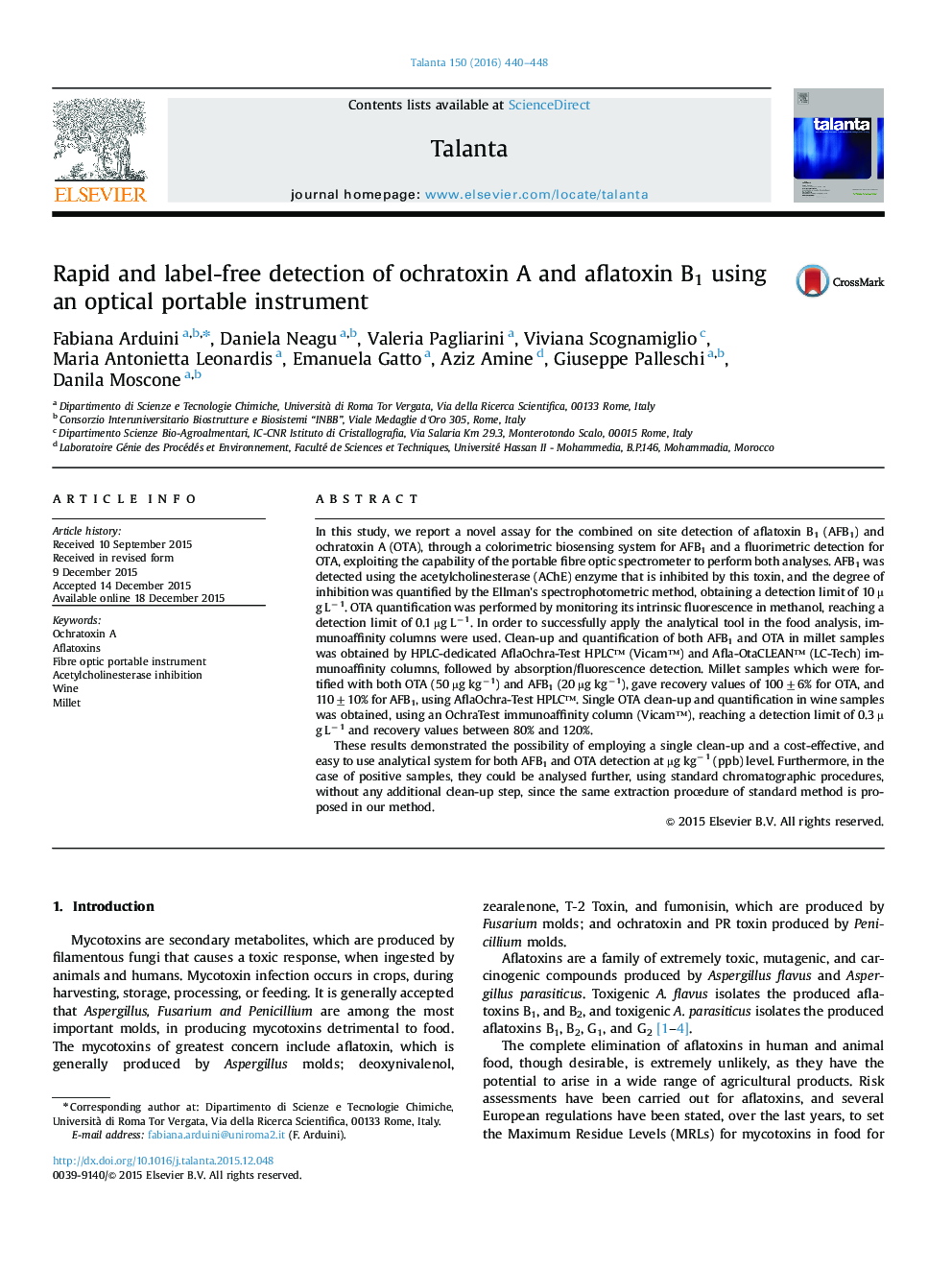| Article ID | Journal | Published Year | Pages | File Type |
|---|---|---|---|---|
| 1242191 | Talanta | 2016 | 9 Pages |
•Determination of OTA/ AFB1 by same sample treatment and optical portable instrument.•AFB1 was detected using colorimetric biosensing system based on AChE inhibition.•OTA quantification was performed by monitoring its intrinsic fluorescence.•Millet samples fortified with both OTA and AFB1 gave satisfactory recovery values.
In this study, we report a novel assay for the combined on site detection of aflatoxin B1 (AFB1) and ochratoxin A (OTA), through a colorimetric biosensing system for AFB1 and a fluorimetric detection for OTA, exploiting the capability of the portable fibre optic spectrometer to perform both analyses. AFB1 was detected using the acetylcholinesterase (AChE) enzyme that is inhibited by this toxin, and the degree of inhibition was quantified by the Ellman's spectrophotometric method, obtaining a detection limit of 10 µg L−1. OTA quantification was performed by monitoring its intrinsic fluorescence in methanol, reaching a detection limit of 0.1 µg L−1. In order to successfully apply the analytical tool in the food analysis, immunoaffinity columns were used. Clean-up and quantification of both AFB1 and OTA in millet samples was obtained by HPLC-dedicated AflaOchra-Test HPLC™ (Vicam™) and Afla-OtaCLEAN™ (LC-Tech) immunoaffinity columns, followed by absorption/fluorescence detection. Millet samples which were fortified with both OTA (50 µg kg−1) and AFB1 (20 µg kg−1), gave recovery values of 100±6% for OTA, and 110±10% for AFB1, using AflaOchra-Test HPLC™. Single OTA clean-up and quantification in wine samples was obtained, using an OchraTest immunoaffinity column (Vicam™), reaching a detection limit of 0.3 µg L−1 and recovery values between 80% and 120%.These results demonstrated the possibility of employing a single clean-up and a cost-effective, and easy to use analytical system for both AFB1 and OTA detection at µg kg−1 (ppb) level. Furthermore, in the case of positive samples, they could be analysed further, using standard chromatographic procedures, without any additional clean-up step, since the same extraction procedure of standard method is proposed in our method.
Graphical abstractFigure optionsDownload full-size imageDownload as PowerPoint slide
